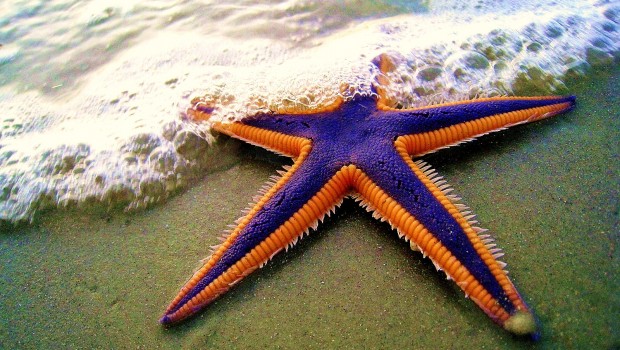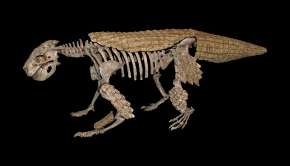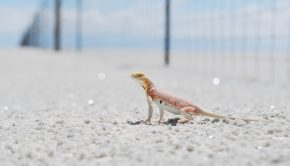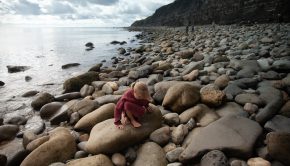Episode 28: From worms to stars
Echinoderms are characterised by a mineralised skeleton, specialised water vascular system and five-fold symmetry. It is this unusual body plane symmetry that gives the starfish its star-shape. None of these features, however, are possessed by the closest living relatives of echinoderms – the hemichordates. Palaeontology offers a unique perspective into the early evolution of echinoderms, revealing that echinoderm characteristics were acquired in a step-wise fashion from a bilaterally symmetrical ancestor. We speak to Dr Imran Rahman, a postdoctoral researcher at the University of Bristol, about the early evolution of echinoderms, from worms to stars.
Podcast: Download (Duration: 35:23 — 48.6MB)
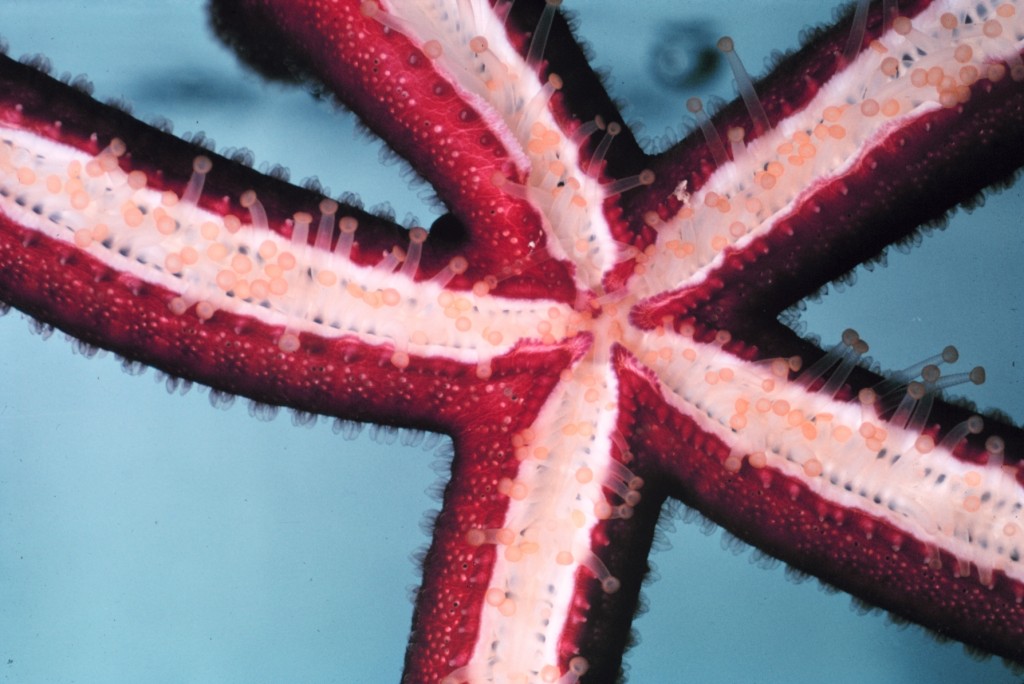
Echinoderms are a diverse and successful group of marine invertebrates. Living echinoderms are characterised by three main features. They have pentaradial (5-fold) symmetry, a mineralised skeleton made of calcium carbonate and a water vascular system – a complex network of internal canals which connect to tube feet. Echinoderms use their tube feet for moving about, feeding and transport of waste products. Image from Wikimedia (PD).
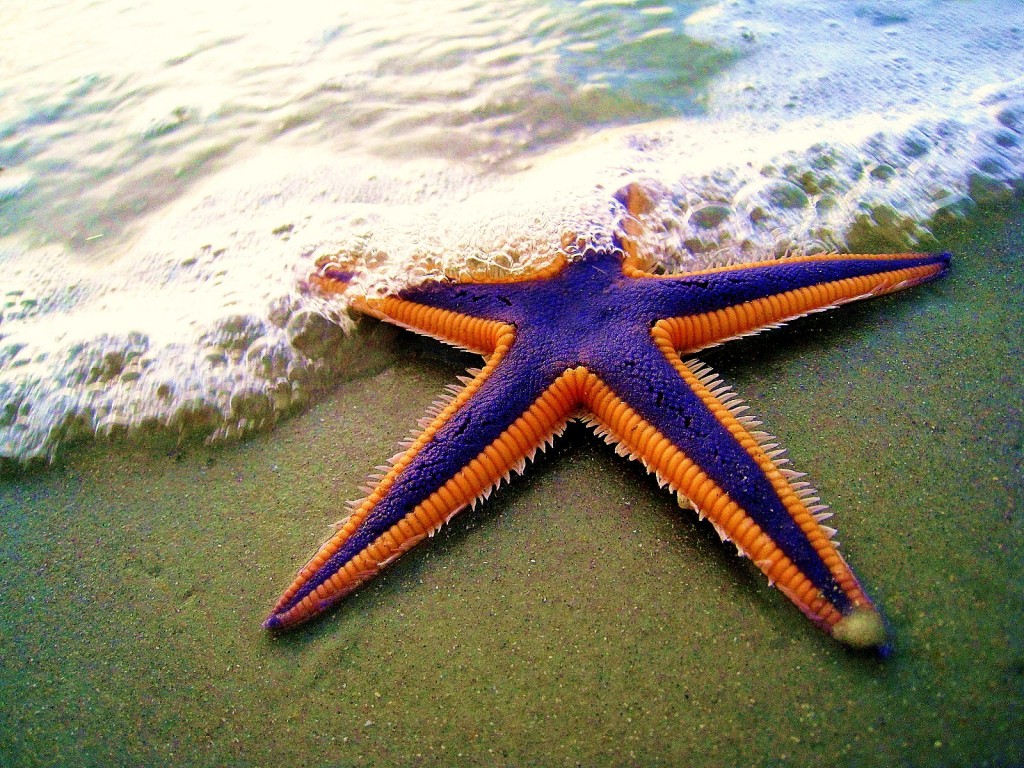
Living echinoderms comprise five major groups, and perhaps the most famous of these are the starfish. Most starfish are generalist predators, yet some species specialise in feeding on coral and others feed mainly on detritus. Starfish clearly show the five-fold symmetry, which is characteristic of echinoderms. Image from Wikimedia (CC 2.0).
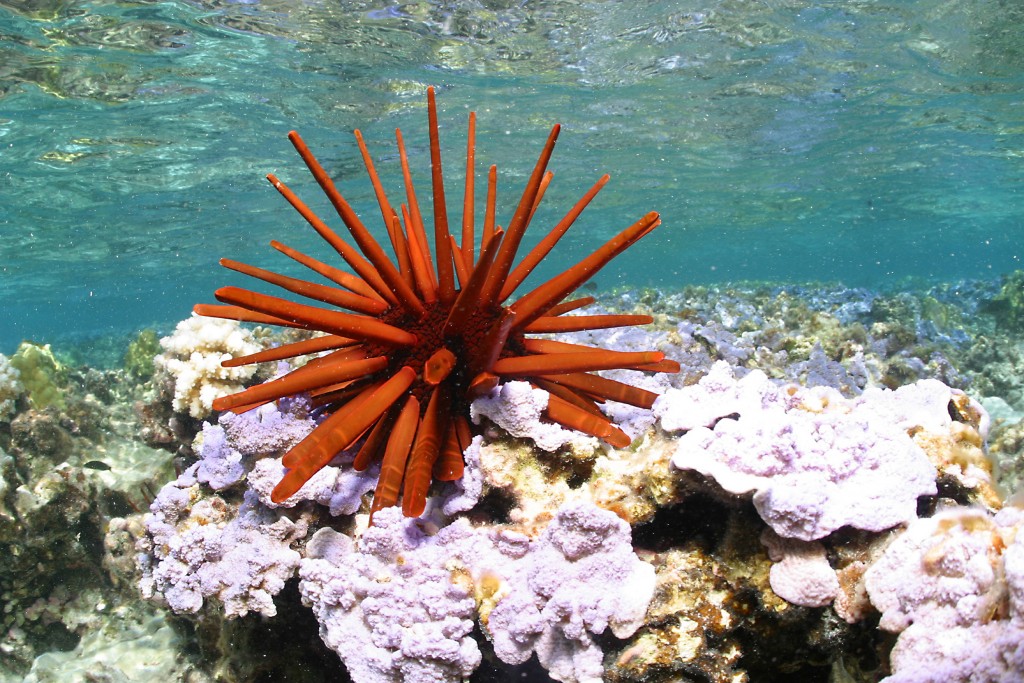
Sea urchins are another well known group of echinoderms. They are typically spiny and live on the sea floor. Like starfish, sea urchins are mobile and use their tube feet to move about. Many sea urchin species feed on algae, while others feed on other invertebrates. Image from Wikimedia (CC 2.0).
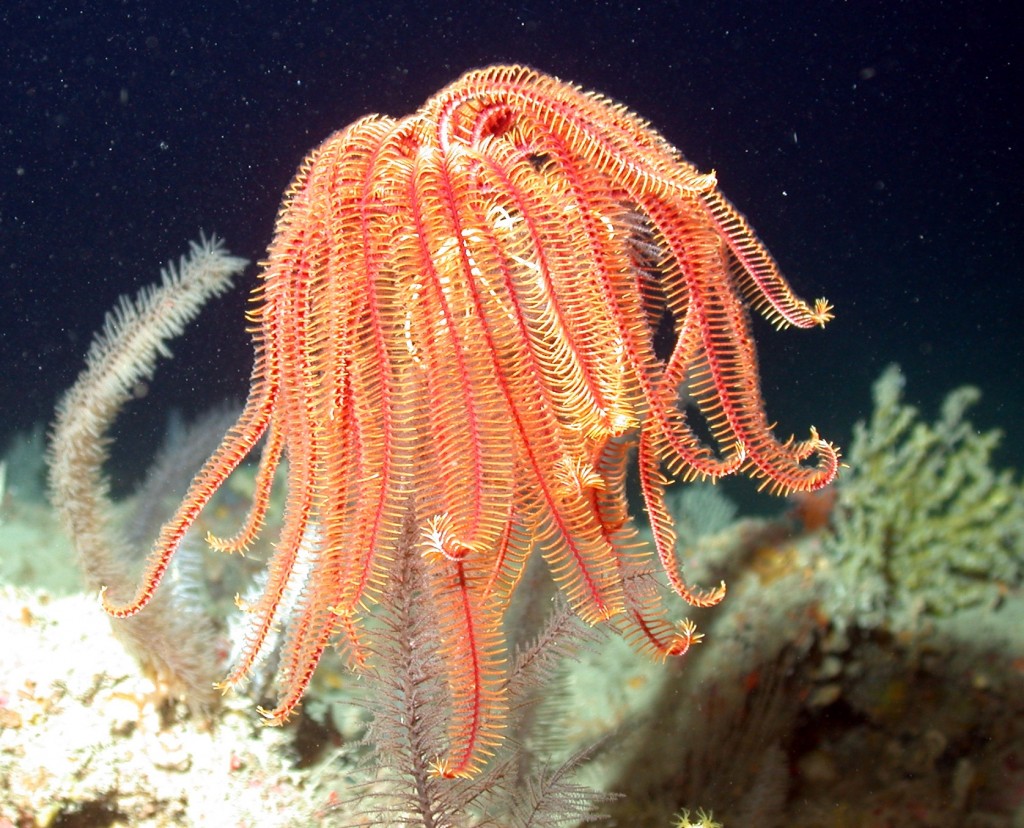
A less well known group of echinoderms are the crinoids, also known as sea lilies. Crinoids are either free-swimming, or are attached to the sea floor by a stalk. They feed passively on microscopic organisms using their feather-like arms. Image from Wikimedia (CC 2.0).
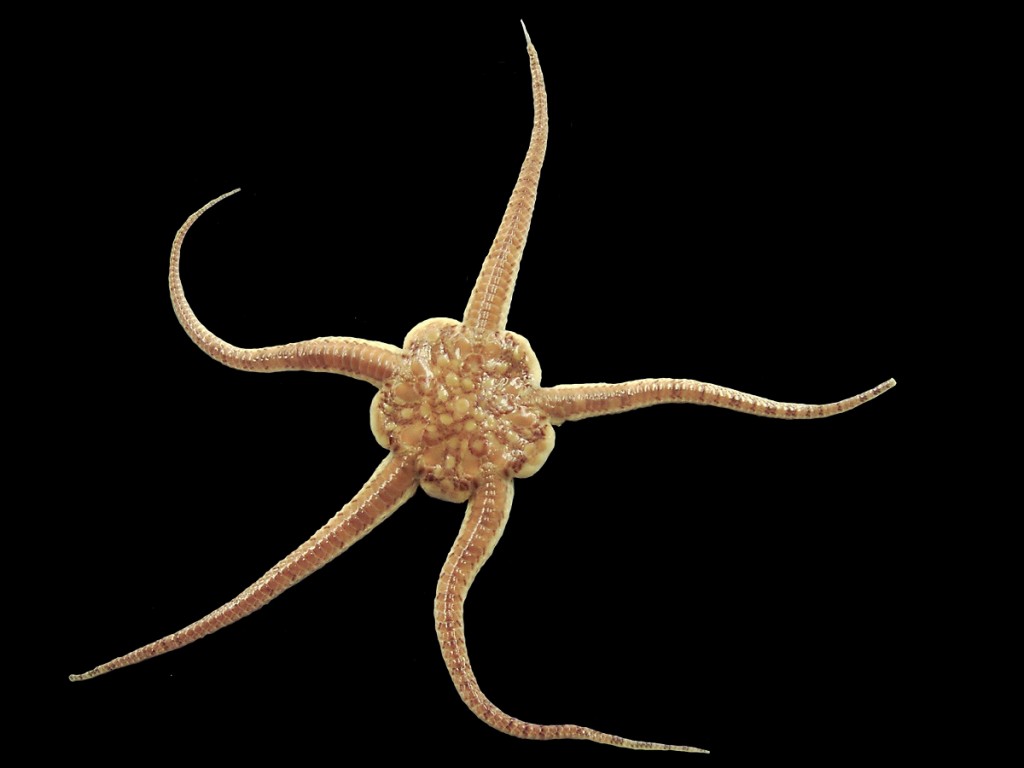
Brittle stars are look like delicate starfish, however there are a number of anatomical characteristics which distinguish the two groups. For instance, brittle starts possess a well defined central disc. Brittlestars are typically scavengers or feed on detritus. Image © Hans Hillewaert (CC 3.0).
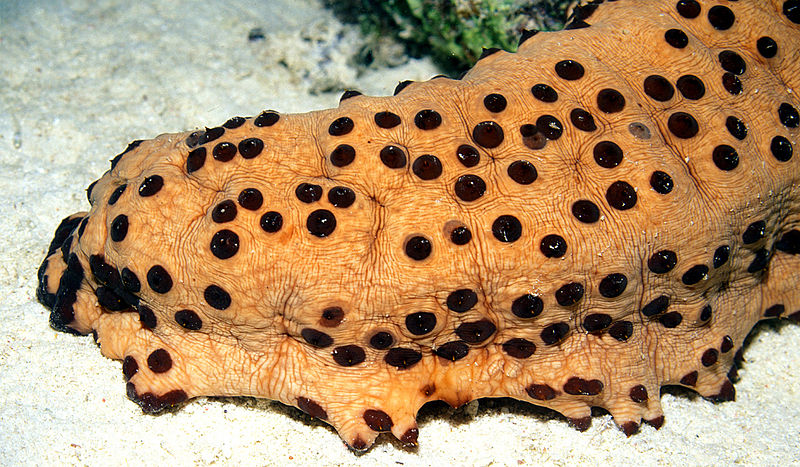
Holothurians, more commonly known as sea cucumbers, may look remarkably different from the other echinoderm groups, however they still possess five-fold symmetry, a mineralised skeleton and a water vascular system. Sea cucumbers are generally scavengers and most live on the sea floor. There are a few species which swim in the water column using modified appendages. Image from Wikimedia (CC 2.0).
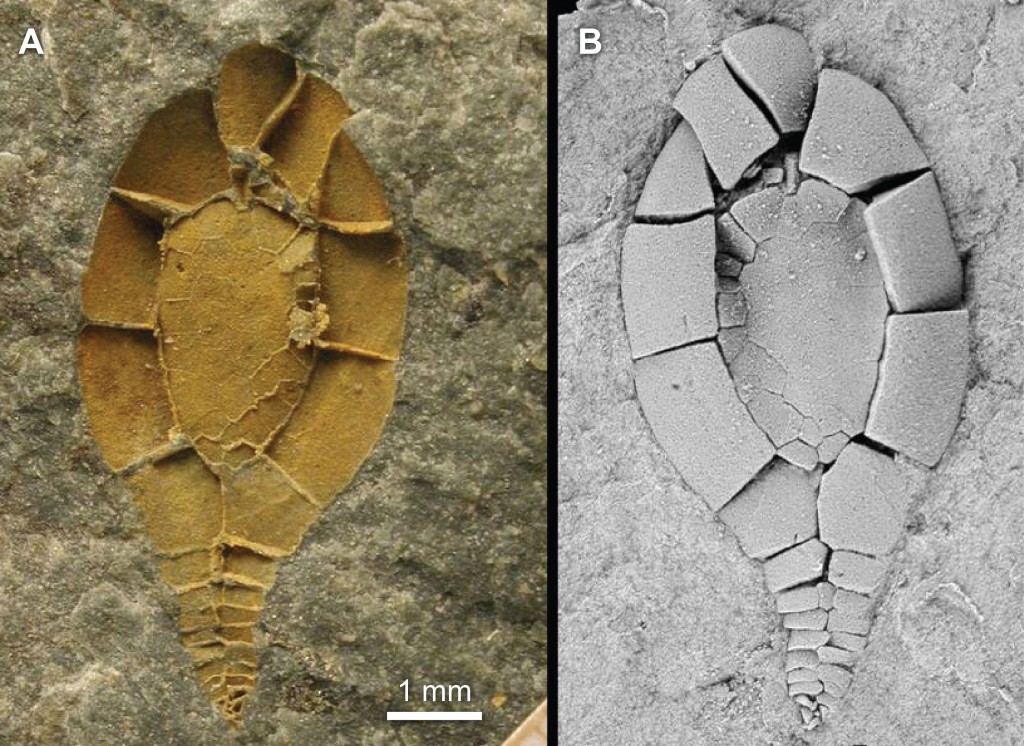
Echinoderms have a good fossil record, largely due to their hard mineralised skeleton. Echinoderm fossils can be preserved in a number of different ways. The image above shows the typical preservation of a Palaeozoic (541 million to 252 million years old) echinoderm. A) Fossil preserved as a mould in rock. B) Latex cast of the fossil, a traditional technique for studying such material. Credit: S. Zamora.
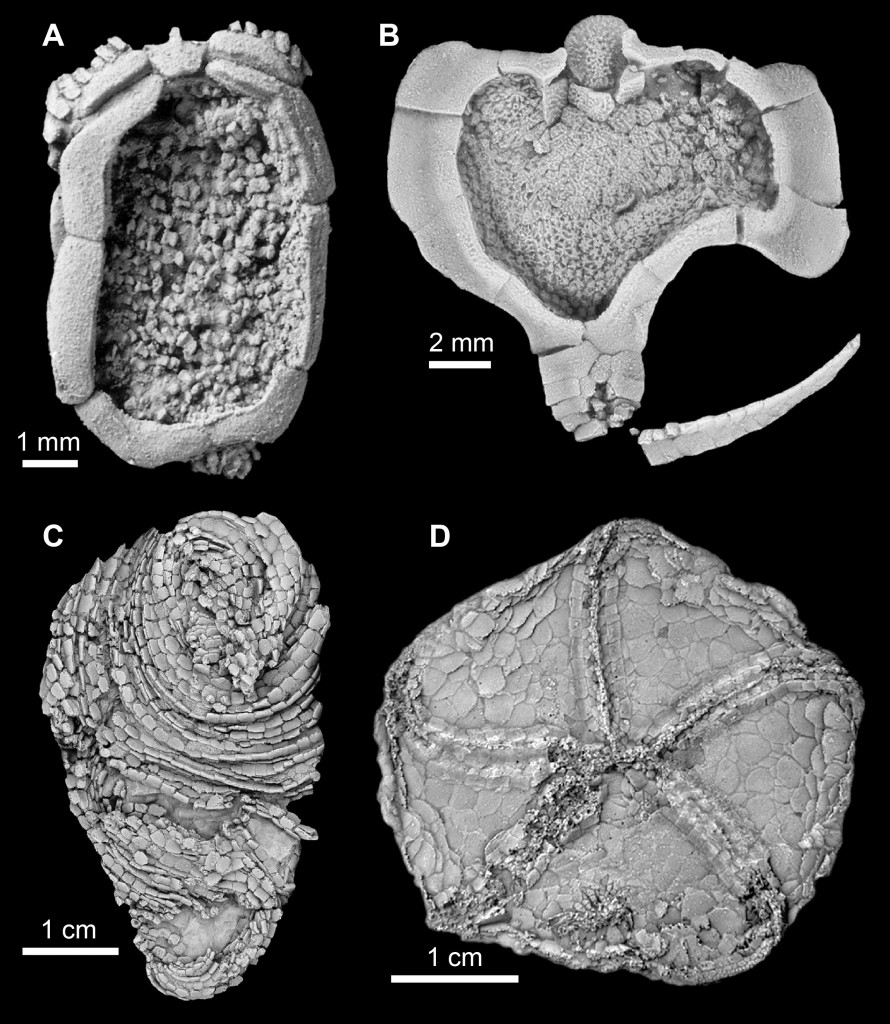
Representative early echinoderms from the lower to middle Cambrian (521 million to 497 million years old). A) Ctenocystis utahensis, a bilaterally symmetrical fossil. B) Lignanicystis barriosensis, an asymmetrical fossil. C) Helicoplacus gilberti, a triradial (3-fold symmetry) fossil. D) Kailidiscus chinensis, a pentaradial (5-fold symmetry) fossil. From: Zamora et al. 2013.
Computed tomography (CT) allows palaeontologists to investigate the internal anatomy of valuable fossils, which would otherwise have to be destroyed in order to obtain such data. The video above shows a CT 3-D reconstruction of Ctenoimbricata spinosa, a bilaterally symmetrical fossil echinoderm. From Zamora et al. 2012.
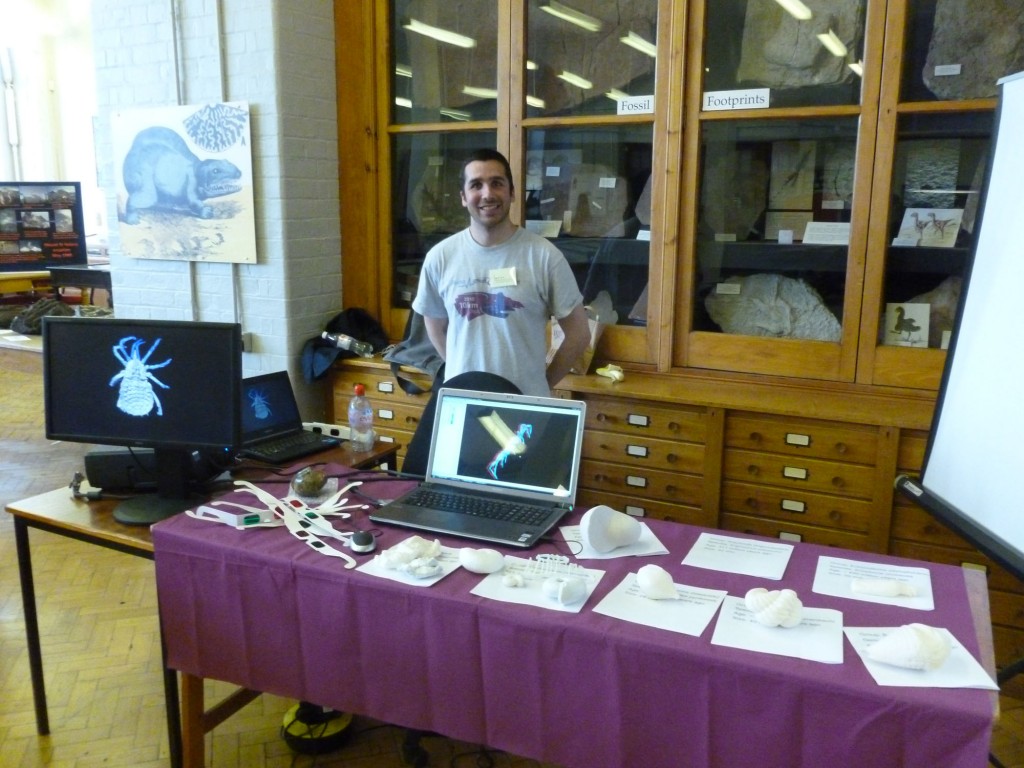
Dr Imran Rahman with a selection of 3-D printed fossils on display at the Lapworth Museum of Geology, University of Birmingham, UK. Credit: R. Garwood.
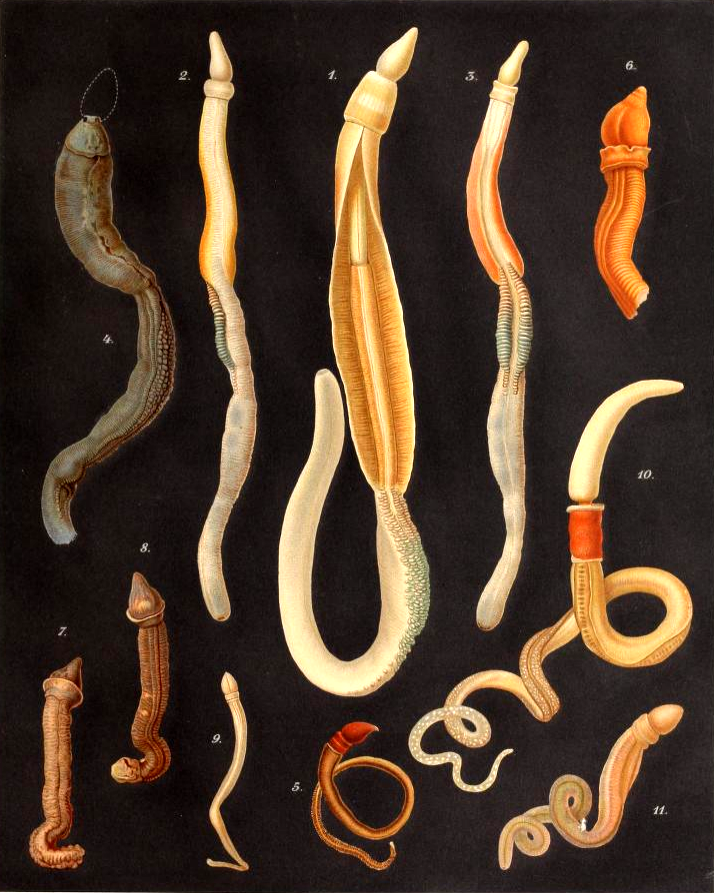
The closest living relatives of echinoderms are the hemichordates. These worm-like animals are bilaterally symmetrical and lack both a mineralised skeleton and a water vascular system. Image form Spengel 1893 (PD).
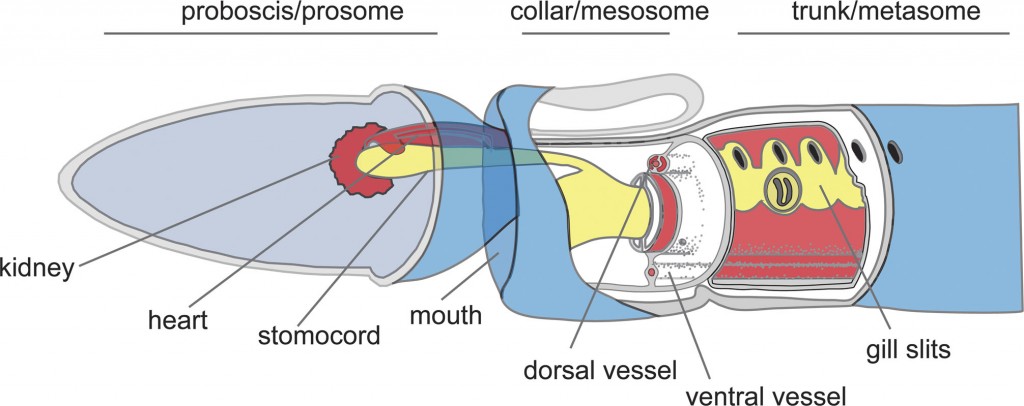
Hemichordates also possess gill slits, which are not present in echinoderms. However the embryos of echinoderms and hemichordates are almost identical, betraying their close relation. Image from Lowe et al. (2006) CC 2.5
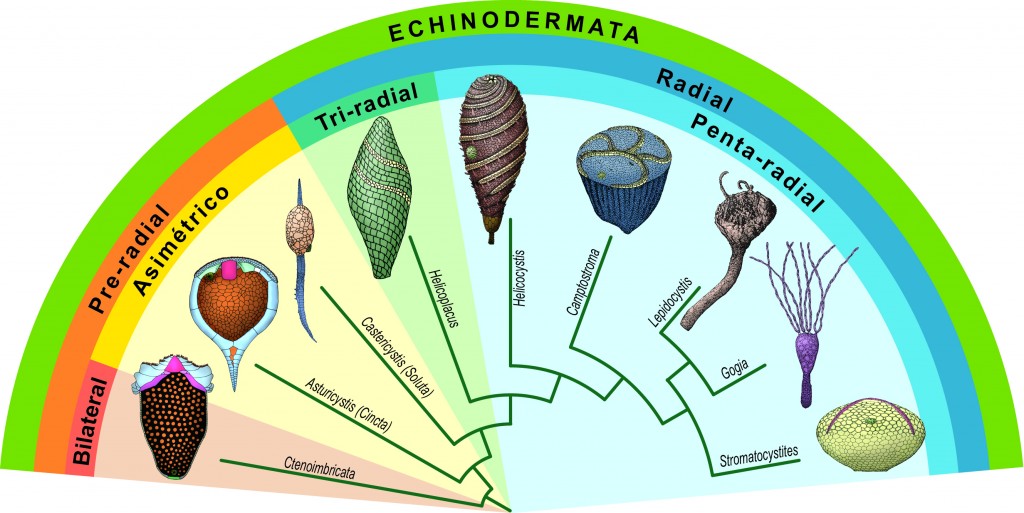
The fossil record of echinoderms allows us to better understand the evolution of five-fold symmetry and the transition from worms to stars. The tree diagram above summarises our current understanding of early echinoderm evolution. The fossil echinoderms reveal the gradual evolution of five-fold symmetry from a bilaterally symmetrical ancestral condition. Credit: S. Zamora.

